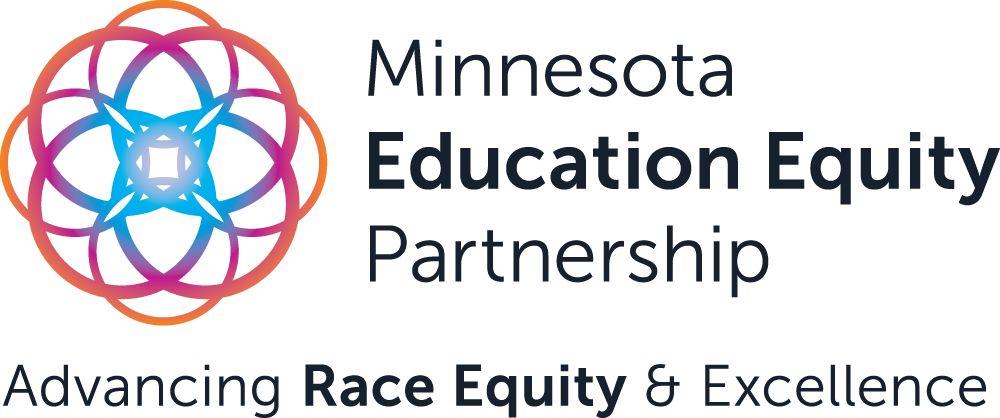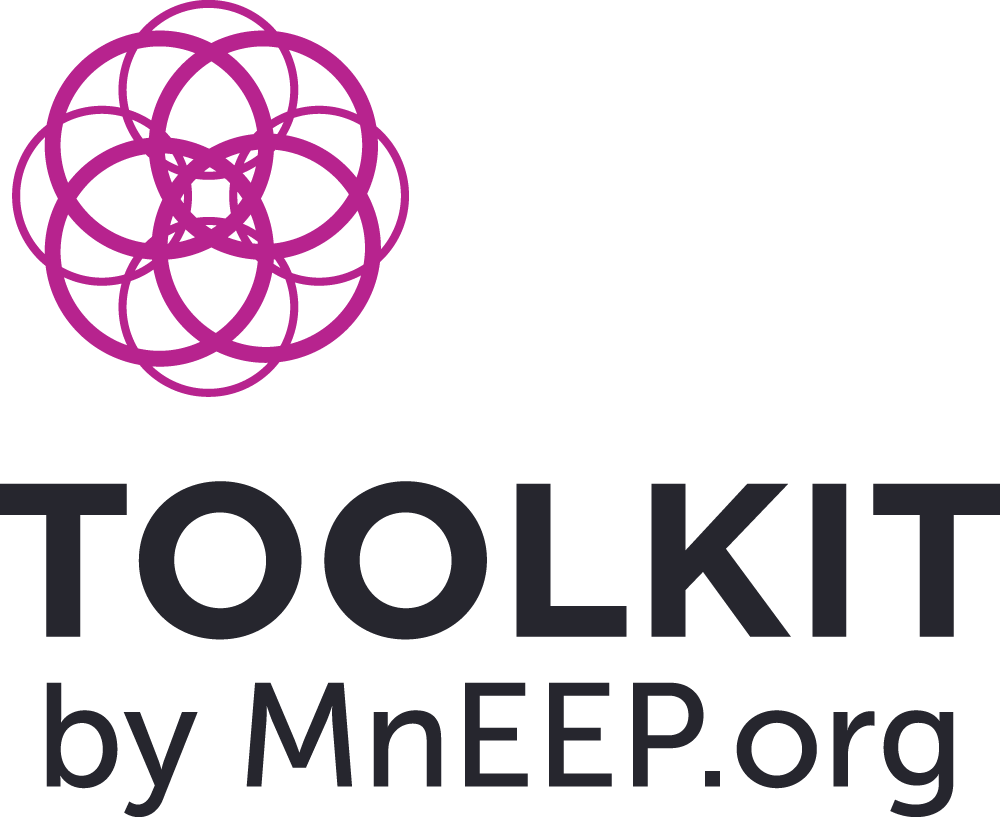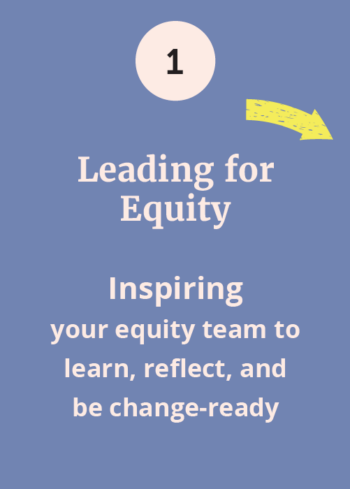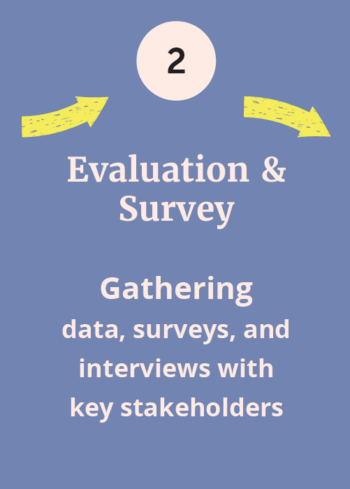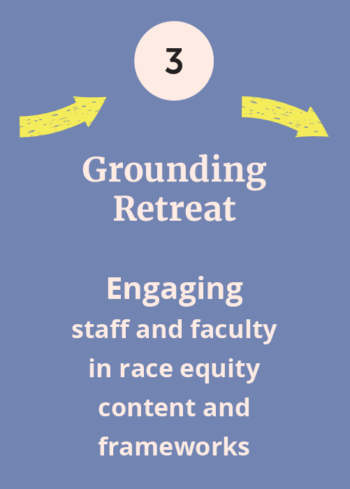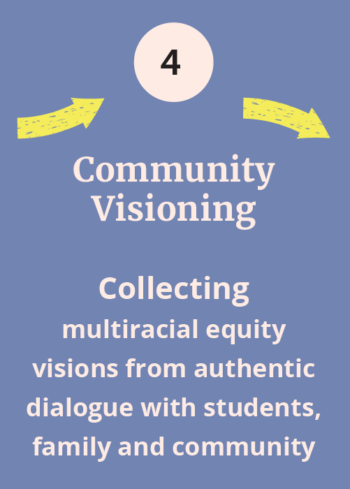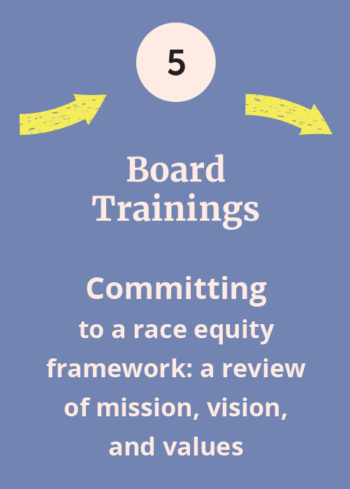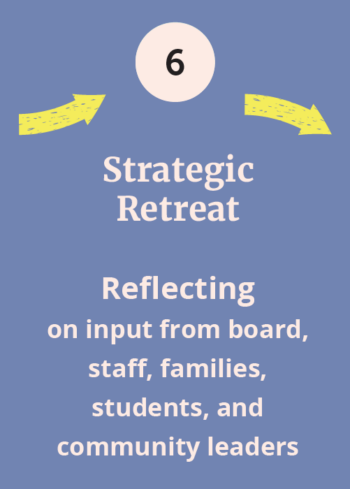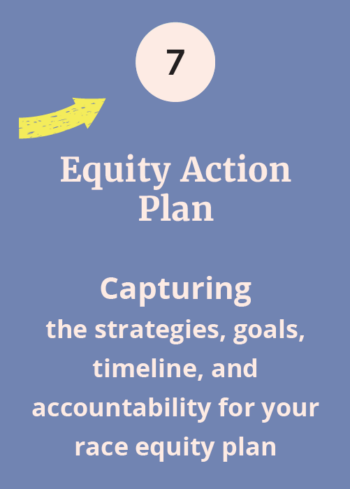Building a race equity action plan
A process & planning toolkit for Minnesota school districts, superintendents, educators, & school board members
As Minnesota’s population is changing, so must its schools. To build a robust Minnesota where everyone has the opportunity to thrive, districts across the state must take action now to build a racially just education system that uplifts the goals, needs, and talents of students who are people of color and Indigenous (POCI).
MnEEP’s Education Equity Action Planning Process for school communities is a vital tool for advancing racial equity and excellence in education.
MnEEP developed these essential Seven Steps for Building an Education Equity Action Plan alongside communities of color and Indigenous communities across Minnesota.
The community-centered process supports school leaders in building district-wide commitment for advancing racial equity plans and leading systems change to support positive outcomes for Minnesota’s POCI students.
In This Toolkit
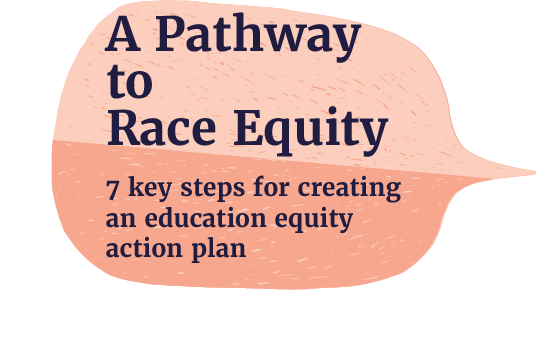
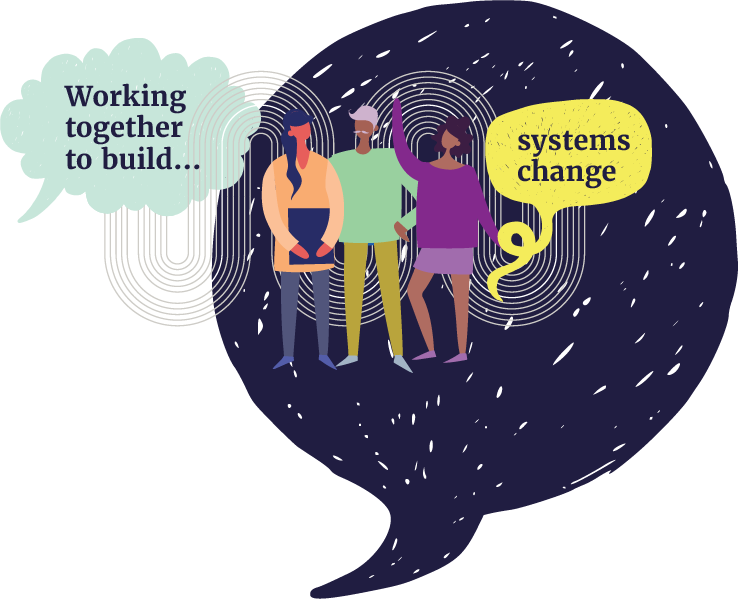
“There are historical moments in which the survival of the social whole, which is in the interest of all social classes, imposes upon those classes the necessity to understand one another.”
— Brazilian Educator and Philosopher Paulo Friere
Building a race equity plan
Working alongside the community to build an Equity Planning Process and Framework is critical for every school and district in Minnesota if we want to advance racial equity and eliminate the racial predictability and disproportionality of student achievement in our state.
MnEEP’s Equity Planning Process is an essential tool for creating a Racial Equity Plan that has a positive impact on POCI students and their communities.
This Equity Planning Process was developed alongside pilot communities, and has supported schools and districts across Minnesota in building racially just education spaces, including the development of new school climate policies; new ways school districts have connected with families of color or immigrant families to envision an equity strategy; and critical shifts in mission, visions, and values of distinct school communities.
Learn more about our Race Equity Plans and Processes in our case studies below.
Understanding racial equity in education
Key definitions and the case for equitable education
Before beginning the equity-planning process, it’s essential district leaders, educators, and staff are informed and aligned with these important definitions, developed by thought leaders and researchers for understanding and advancing racial justice.
Dr. Gloria Ladson-Billings, in her article, “From the Achievement Gap to the Education Debt: Understanding Achievement in U.S. Schools,” coined the term “education debt” to put racial disparities in education into a historical context. The education debt is that which is owed to minority students that have accumulated from centuries of discrimination against these students and their cultural communities.
“Is the racial bias across institutions and society. It describes the cumulative and compounding effects of an array of factors that systemically privilege white people and disadvantage people of color” (Race Equity and Inclusion Action Guide, Annie E. Casey Foundation)
A new condition for race equity brings about clear remedies for historic and present day structural and policy barriers producing racial disparities and disparate impacts. Race equity is not merely a value, it is a systemic and structural shift. Race equity is actualized fairness and justice” (Annie E. Casey Foundation).
Furthermore, In a new race equity condition:
- People of Color and Indigenous and/or American Indian students, families, and teachers are provided the learning assistance specific to their needs and full access to learning opportunities that build on their talents and cultural assets.
- Those who are most impacted by inequities have the space to build power and lead through collective action. Students and families of color and Indigenous and/or American Indian students and families provide input into decisions that impact their education and life opportunities.
- Race equity is raising the achievement of all students while eliminating the racial predictability and disproportionality of which students occupy the highest and lowest achievement levels.
A pre-assessment is an evaluation process aimed to capture the current “state of education”– equity policy, practice and narratives of a school district community. The pre-assessment process may involve such tools as: surveys, individual interview questions and protocols, and key organizational document review questions. The pre-assessment is aimed to guide the technical assistants, researchers and organizational leadership in identifying areas of strengths and challenges in centering equity into the school district.
A Race Equity Framework involves the unpacking of current assumptions on opportunity gaps—by centering cultural communities’ experiences, visioning & assessing “state of equity” by system. It is an articulation of race equity understandings, terms, beliefs, and principles by a school district or organization. Most importantly – it is a written and verbal commitment that can be seen by stakeholders and staff regarding the application of new policy, practice & narratives centering racial equity into the institution.
A Race Equity Plan not only outlines key racial equity statements, mission, vision and values, but it also includes specific strategies, timeline targets and goals outlined for the school community. For MnEEP, the model Race Equity Plans may also contain draft equity policy language and a background on the full equity planning process and key data points from the pre-assessment and student achievement data, to provide key background information for stakeholders and constituents using the Plan to guide equity campaigns and accountability measures.
The Case for an Equitable Education
Why Minnesota schools and districts must center racial equity.
- Civil rights in education is the law. Title IV of the Civil Rights Act of 1964 prohibits discrimination in public schools because of race, color, religion, sex, or national origin. Public schools include elementary schools, secondary schools and public colleges and universities.
- A diverse curriculum and diverse staff in U.S. public education results in greater academic and social skills for students.
- Cultural competency, racial literacy and ethnic studies in U.S. school curricula are vital 21st century skills for U.S. students to thrive in a global, multiracial society and economy.
- The Latinx, African American, Asian, immigrant, and American Indian communities of families and students have a wealth of knowledge and skills that will enhance the overall experience of public education as academic centers AND centers of belonging.

Core principles for building race equity plans
Committing to racial equity
These critical principles are a promise to act—grounding leadership and staff in systems-change frameworks and engaging diverse communities in equity-visioning sessions to build policies and practices to advance racial equity.
Principle 1: Dedicated Leadership
An education equity action planning process requires dedicated leadership from the head of an organization, to understand the systemic nature of racial equity, listen to all stakeholders, and continuously guide the collective through phases of the journey toward the race equity framework or plan deliverable.
Principle 2: Assessment and Analysis
An education equity action planning process requires an analysis of current mission, vision, values, and practices. Key reflection time on assessment data will ensure the required processing of information about the current state of equity for the school or institution.
Principle 3: Key Community Input
An education equity action planning process deliberately gathers student, family, and community input to discuss the racial equity definitions/concepts, the dreams that they have for themselves and their families, and the equity strategies they would want their school or organization to center for a more racially equitable and accessible public education.
Principle 4: Personal and Systemic Learnings are Vital
An education equity action planning process—is both an individual and collective transformative process for racial equity in education.
Every individual in the school, and most importantly participating in the planning process, should commit to personal reflection and learnings on racial equity, as well as a collective set of reflections on systems learning and change. This ensures a deeper understanding of racial equity throughout the system and will lead to transformative social justice, equity, and inclusive outcomes in education.

MnEEP Education Equity Action Planning Steps
A 7-step process for communities, district leaders, and educators building an evidence-based race equity plan
A race equity planning process will require a system leader who partners with an equity team and researchers/consultants to guide the organization’s learning stops through the full process.
This leadership then provides inspiration and motivation for the organization to learn from the assessment process and reflect on the findings and implement adaptive strategies.
“The leader must be a zealot for equity who sees the big picture of challenges but recognizes the opportunities to be a change agent.” (Scheetz and Senge, “Systems Change and Equity.”)
Key skills this leadership should have for this role:
- Commitment to their own individual journey on racial justice
- The ability to learn information, be reflective, and change-ready
- Ability to work with various stakeholders in decision-making
- Resistance-ready – knowledgeable of any arguments against the planning process and being ready with narratives and communication talking points with the case for equity.
- Committed to long-term change management
Recommended Readings:
- “Inner Work for Racial Justice” Rhonda McGee
- “Systems Change and Equity,” Equity Centered Capacity Building, Scheetz and Senge
The foundational data to understand the “state of equity” for a school or organization is the input necessary to guide the equity planning process, specifically learning stops and adaptive strategies.
The pre-assessment should consist of formal surveys, interviews and review of key school or organization documents. Surveys can contain main domains regarding questions on equity policies, practices, narratives and organizational culture. (see readings section).
One-on-one interviews can capture the impact of the school’s systems, policies, and practices directly with key stakeholders such as teachers, board members, families and students. A review of key documents also informs the process around an equity focus as they exist in the school mission, vision, values, policies, practices, overall strategic plans, communications materials, and social media presence.
After the results are gathered, the equity team and school leader should review the data with the research consulting group to make meaning of the data together. Communicating wondering– then findings–with the school board and stakeholders will be key to gain understandings and commitments to action as equity strategies emerge from the planning process.
Key Lessons:
- The consultants team doing the pre-assessment should have strong background in education equity research, case studies and evaluation.
- Provide enough time to gather survey data, interview data and document review information to review with the leader(s) of the equity planning process.
- Summarize key findings, once input from the leaders and others providing “noticings” on the pre-assessment data. This summary will guide future learning sessions and staff retreat focus areas.
Recommended Readings:
- “Supporting Sustainable Improvement in School Systems: Capacity Building for Equity and Excellence,” Dr. Sheryl Petty, American Institute for Research.
- “Operationalizing Racial Justice in Non-Profit Organizations,” Maggie Potapchuk
- “Equity Audit Materials: Criteria for an Equitable School, Classroom, and Teacher Behaviors” by the Mid-Atlantic Equity Center (MAEC)
A vital step in the MnEEP equity action planning process is a retreat session (4-6 hours) that can be used to ground the organization’s staff and leaders on key racial equity definitions and concepts, in addition to providing a review of the pre-assessment findings. This is also an important time for the organization to get more in-depth case study reviews of the use of an equity lens and the development of race equity frameworks from key case study examples.
The Staff and leadership retreat is a key “learning stop” in the equity planning process, therefore, an evaluation to gather what key concepts were gained, the understandings of the pre-assessment data, and any key questions being raised by participants is important in moving forward with the process. The results of this evaluation should be reviewed with the leader/leadership team of the entire process.
Key Lessons
- Trainers or presenters should prepare an agenda and share key readings on concepts and ideas with plenty of time for participant review.
- Plenty of exercises, with allowed time, should be created for participants to engage with new equity concepts and case studies on equity framework developments.
- It is very important to complete a retreat evaluation and review the findings in a debrief with the leadership team.
Recommended Readings/Articles
- “From The Achievement Gap to the Education Debt: Understanding Achievement in U.S. Schools,” AERA 2006 Annual Presidential Address, by Dr. Gloria Ladson-Billings, 2006.
- “Operationalizing Racial Justice in Non-Profit Organizations,” Maggie Potapchuk
- Investing in K-12 leadership development
The purpose of a community visioning session is to create a space for authentic dialogue about equity in education within a school district. Discussion questions are prompted, but participants are encouraged to tell stories and share their experiences within the public school system.
Dr. Sheryl Petty, a leading equity in education scholar, developed a set of equity plan design principles for capacity-building for equity and excellence in education.
She asserts that systematic attention to race, class, power, and diversity— and their impact on policies, practices, and patterns at local, state, and federal level—is essential for equity planning.
It’s critical that communities, parents and students are essential partners in the equity in education process.
The results of the visioning sessions should be gathered for a report on key themes that emerged from each session. This report could disaggregate the qualitative information by cultural group and also the collective, similar themes across cultural groups.
Key Lessons:
- Plan for timely and culturally responsive outreach to community members for visioning sessions.
- Host the visioning sessions at locations most accessible and safe for the community (such as community centers, churches, schools, or other sites that parents are comfortable meeting in).
- Ensure facilitation* of visioning sessions are done in culturally and linguistically appropriate ways with facilitators who share the same cultural background as participants.
* It is highly encouraged to not have school staff as facilitators, as this may not encourage the most in-depth answers from participants.
When evaluating the impact of the session, gather any names and contact information for those participants that would like to stay involved in the process and communications on equity policy and practice implementation.
Key Reading:
“Supporting Sustainable Improvement in School Systems: Capacity Building for Equity and Excellence,” Dr. Sheryl Petty, American Institute for Research.
An important element of the goals and final plan is a proposed school equity policy and equity policy framework for policy setting that will be proposed to the school board elected officials.
The equity framework identifies the school district’s commitment to equity in education. Additionally, there are many examples of school districts that have school board-adopted racial equity policies. (see “Key Equity Policies or Frameworks Case Studies”)
The goals of many policies are to eliminate the predictability of student achievement outcomes based on racial, ethnic or other demographic factor.
Components of equity frameworks and policies Include: definitions of key terminology such as equity versus equality; statements recognizing the inequity in resource allocation based on student needs; and policies outlining actions that will be taken to address historical racial bias within their schools and systems. Some schools (may even create an equity scorecard to help measure progress.
Key Lessons:
- Board trainers should have insights on the level of equity conceptual education the board has had to date, to build trainings around key foundational knowledge on the education debt, education equity policies, and definitions of racism.
- Board members should see a set of key case studies and research points on the impact on academic outcomes and community prosperity that are gained from centering equity into a school system.
- Boards should have an understanding of using an equity lens on policy decisions.
- Boards should strategize building a narrative for board action on equity, this resolves questions regarding the importance of a new or emerging equity-focused school direction. (see “Building Narrative” section).
At this stage of the MnEEP Education Equity Action Planning process, it is very important to gather the input from the pre-assessment, community visioning sessions, and board and leadership team analysis – to begin to review and draft an equity framework.
A “Strategic Retreat” provides time to reflect collectively for the school organization and provide thoughtful draft language for a draft Race Equity Framework. An education race equity framework provides language for the school’s mission, vision, values and high-level strategic objectives. The draft framework should eventually be presented by the Superintendent with the Board for adoption.
***This equity framework will gain more political leverage and support for adoption because a cross-sector of key school stakeholders discussed and agreed collectively on racial equity and inclusion language found more clearly in a school district’s mission, vision and values.
With the adoption of a Race Equity Framework, the school district can now put together a Race Equity Action Plan with more clear strategies, equity statement, timelines and goals for policy and practice shifts in the system.
A session with the strategic retreat group – that looks at root causes of inequities in the current academic program, can lead to clear equitable strategic practices, policy shift ideas, and narrative shift ideas. The Equity Plan is a document that helps capture these strategies with a timeline and quantitative goals for implementation accountability. The Equity Plan can also capture important quotes and findings from the pre-assessment and community visioning sessions – showing the strong case for systems change.

“The primary good a society can extend to its people is membership. Who has the right to belong? Whose claims to belong are recognized and whose are disregarded? Belonging goes beyond mere acceptance. It is being seen at a level that respects and acknowledges the right for all to participate in society equally. How can policy be created for people who are seen as not belonging, or not even seen at all?”
— john a. powell, Othering and Belonging Institute
Key Equity Policies and Frameworks
St. Paul, Minnesota
In the fall of 2019, Avalon charter school located in Saint Paul, Minnesota partnered with MnEEP for an all-staff retreat to unpack the equity, justice, and inclusion focus in their school mission, policies, and practices. This retreat resulted in important school staff and leadership dialogues and reflection—and eventually a shift in articulated school mission, vision, and values.
MnEEP’s evidence-based Race Equity Planning Process was built by Jennifer Godinez; race equity consultants and leaders; communities of color and Indigenous communities; and our core pilot districts, administrators, and superintendents.
